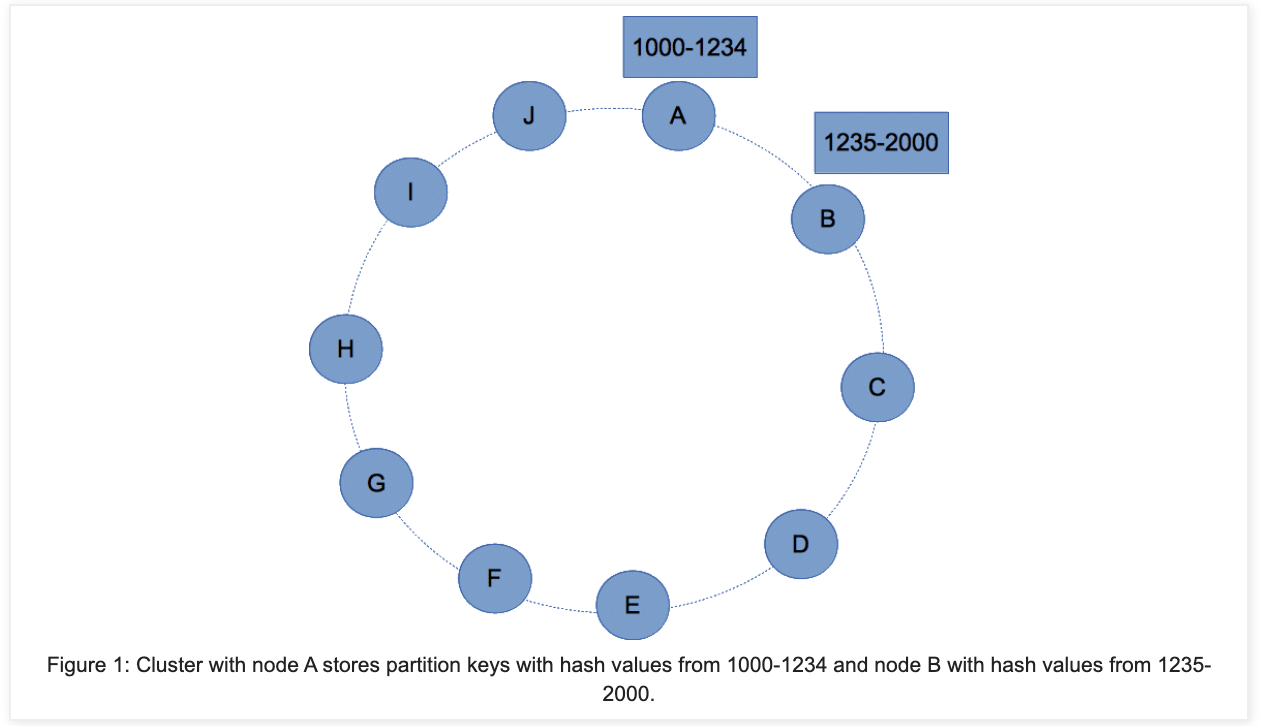Table of Contents
TODO
Cassandra
Cassandra is an Open Source, Apache Licensed, Distributed, NoSQL, "KV" Database
To be fair, it can be used and abused in many ways, but at the end of the day we're partitioning data across nodes via a partitionKey, and accessing our data via that partitionKey, so it can be equated to KV, but we could also get multiple keys and some people abuse this in weird ways
Concepts
Below is a short walkthrough that will help with some downstream design decisions
-
Maps: A Map / Hash Table...
key -> valueis a very useful tool, and one people frequently use in development -
RowKey: Given this "set" (Row) of Attributes that we've stored in this "Map", we'd most likely want to access this entire Row in one go
- AKA Primary Key
- We could make a Map of Maps
- In practice, we mostly store a Map of K:V objects, or a Map pointing to a List
- This is known as a
Row Key - This allows us to access a Row of Attributes using a single Key
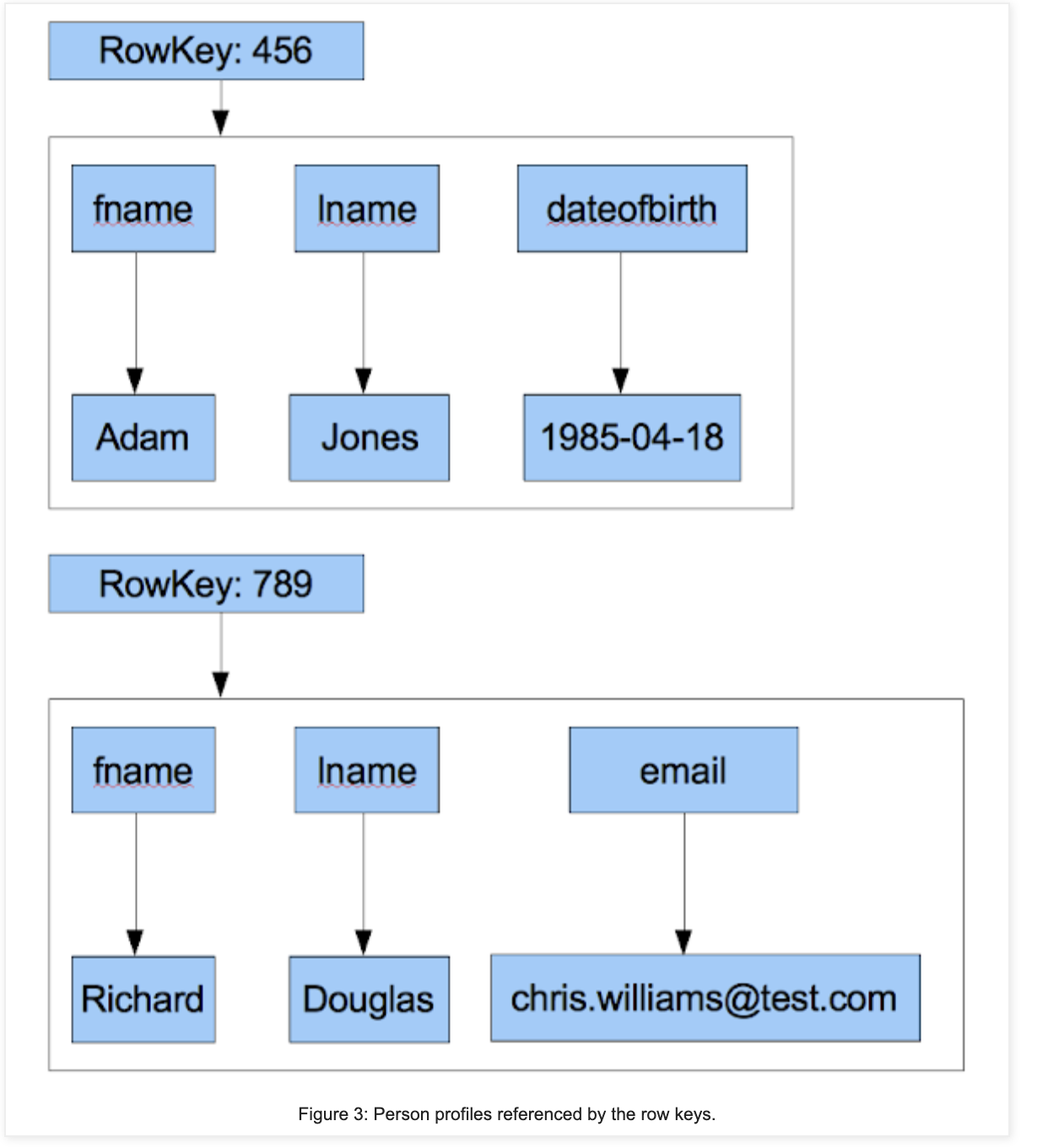
-
Not all Rows have the same Attributes
- We might have more information for John Smith than we do Jane Doe
- Because of this, for the actual underlying storage mechanisms we may need to decouple our Rows and not have such rigid schemas
- We'll need to use a Map of Maps
- Index of Indexes, where the lowest tier Index / Pointer points to the Row
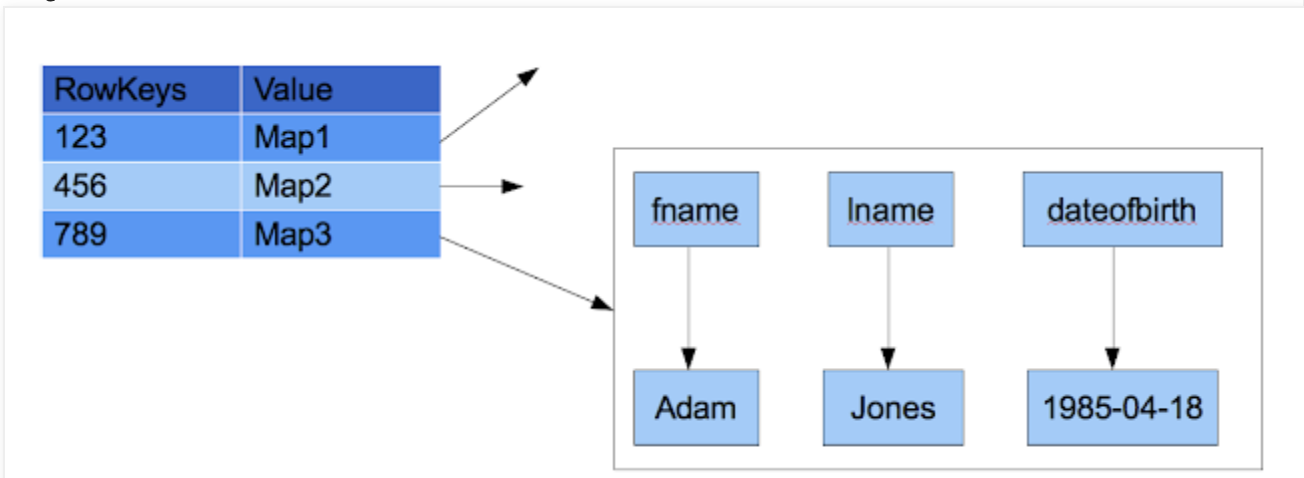
-
KeySpaces:
- Conceptually similar to a Database in a Relational Database
- KeySpaces are namespaces that define how data is replicated around Nodes
- KeySpaces contain several Tables
1 KS : M Table
-
Tables:
- Tables have multiple Rows, and are similar to Tables in a Relational Database
- Each Row is referenced by a Primary Key
- The number of Columns can vary across each Row
- Column names and values are of type Binary
- Therefore names and values can be text, integer, date, etc... not just strictly text like Relational Database
- A dummy example would be:
create table person ( person_id int primary key, fname text, lname text, dateofbirth timestamp, email text, phone text );- We use
person_idas the Primary Key or Row Key insert into person (person_id,fname, lname, dateofbirth, email, phone) values ( 123, 'Chris', 'Williams', '1960-05-20', 'chris.williams@test.com', '099045769');- We insert a Row for
Chris Williamswithperson_id = 123
- We insert a Row for
- We use
- On inserting a Row, we'd get something similar to
- Also notice below that
person_idis not a column specifically, it's just theRowKey 
- Also notice below that
- We could then insert new Rows with different information / Columns
insert into person ( person_id, fname, lname,dateofbirth) values ( 456, 'Adam', 'Jones', '11985-04-18');
-
Primary Key:
- AKA Row Key
- Identifies and represents a unique Row
-
Compound Primary Key:
- Allows us to identify a Row based on the concatenation of multiple Columns
-
Clustering Key:
- Helps us to order and sort the Rows of our data within a Partition
- Can be used to create Secondary Indexes
-
Primary and Cluster Key Declaration:
K1: primary key has only one partition key and no cluster key.(K1, K2): column K1 is a partition key and column K2 is a cluster key.(K1,K2,K3,...): column K1 is a partition key and columns K2, K3 and so on make cluster key.(K1, (K2, K3,...)): It is same as 3 i.e column K1 is a partition key and columns K2,K3,... make cluster key.((K1, K2,...), (K3,K4,...)): columns K1, K2 make partition key and columns K3,K4,... make cluster key.
-
Partition Key:
- Decides which Partition / Node the Row is going to be hosted on
- Can use one or many Attributes as a Partition Key
- If there are multiple columns in a Partition Key, we need to include those in every query
PRIMARY_KEY((name, email), birthdate)would route data to Partitions based on(name, email)so we would need to include those 2 pieces of information everytime we want to lookup the data
-
Partitioner
- The Partitioner is a program / function that will take the Partition Key and figure out which Node the Row is assigned to
- Allows us to PUT the Row to the right Node, and to figure out which Node we need to GET from
- We discussed this part in depth in Partitioning Document of our Distributed KV Store Implementation
-
Node:
- Each Node in Cassandra owns a set of Tokens, and each of these Tokens describes a Partition
- Basically, each Node owns a set of Partitions
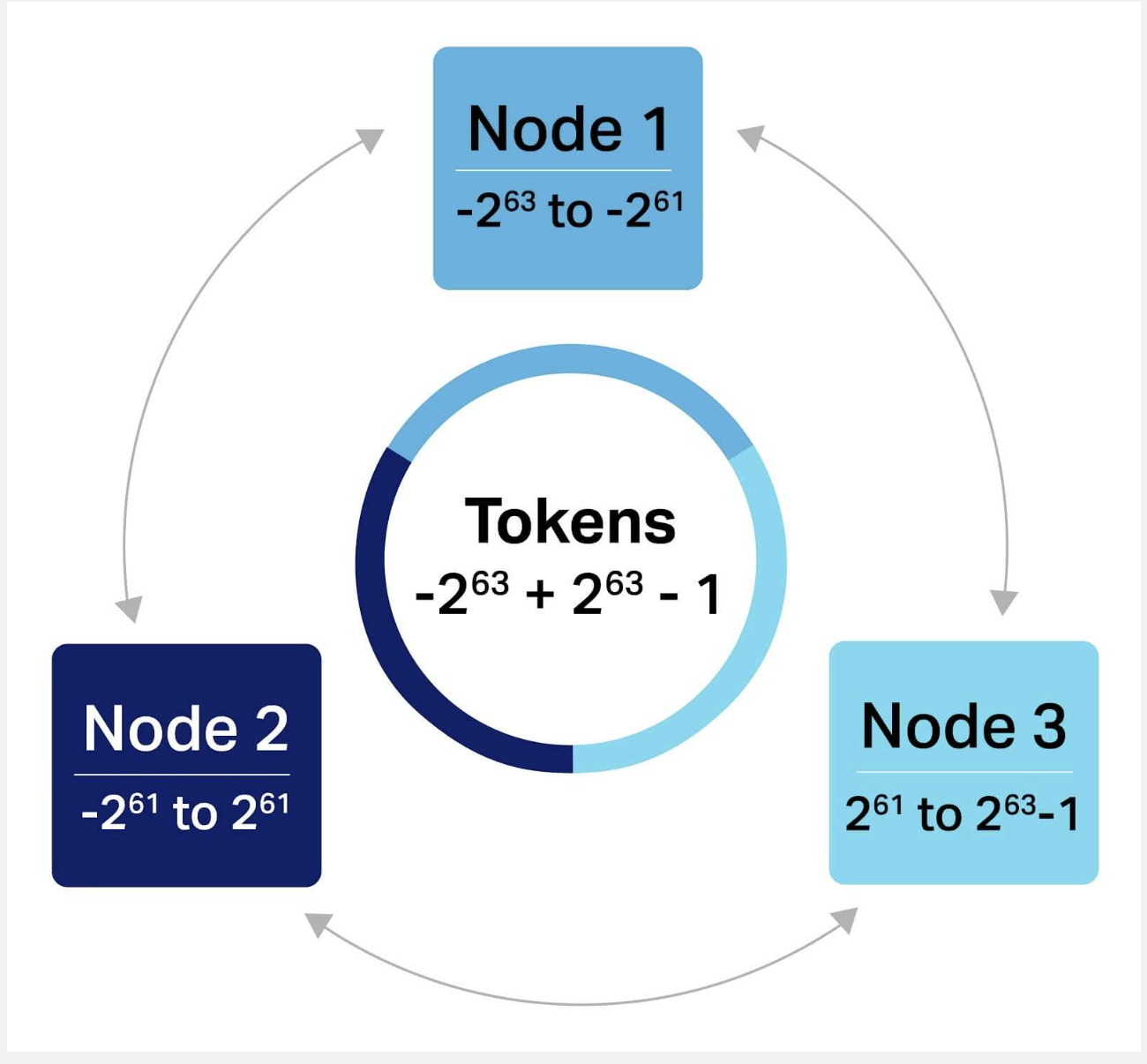
-
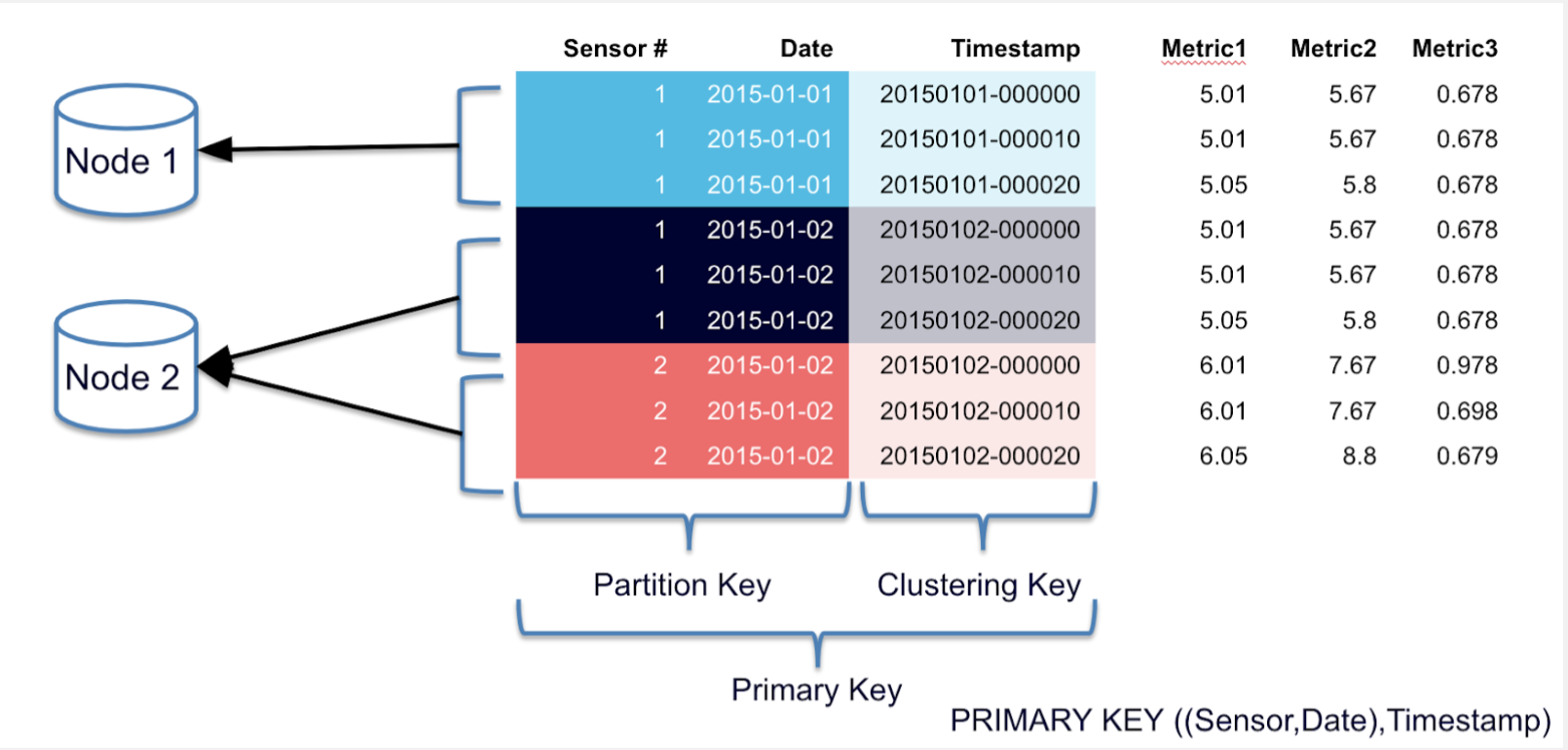
Indexes
Primary Indexes
Primary indexes are built off of Primary Key's, and should be almost instantaneous access (think of lookup on Hash Table)
If you have a User Table with user_id, user_email, <other_attributes>, your Primary Key is going to be user_id and should give you almost instantaneous access to email and other attributes
What if you need to find a user_id given a user_email? Basically the inverse of this query?
This is typically where Secondary Indexes come in, but they have some major pitfalls to be taken into account
Because of this setup we can say that Primary Indexes are Global - i.e. the Index itself is spread across multiple Nodes, and realistically it happens because of the Partitioner routing PUT and GET to the right Nodes and then using the Hash Table lookup to find the right PrimaryKey -> Row to update
Secondary Index
Building a Secondary Index over user_email would allow us to complete that inverse query, but it would basically mean we need to store every single user_email -> [user_id] mapping...we see how this could go poorly
User emails most likely will be 1:1 distinct with user_id, and so if we have 1Million rows, our Secondary Index would also be another 1Million rows
Storage Structure of Secondary Index
- In the above section on Primary Indexes we mentioned that Primary Indexes were Global, and the counter to that is that Secondary Indexes are Local
- This means that all Secondary Indexes are made up of basically a big Union over all Partitions / Nodes
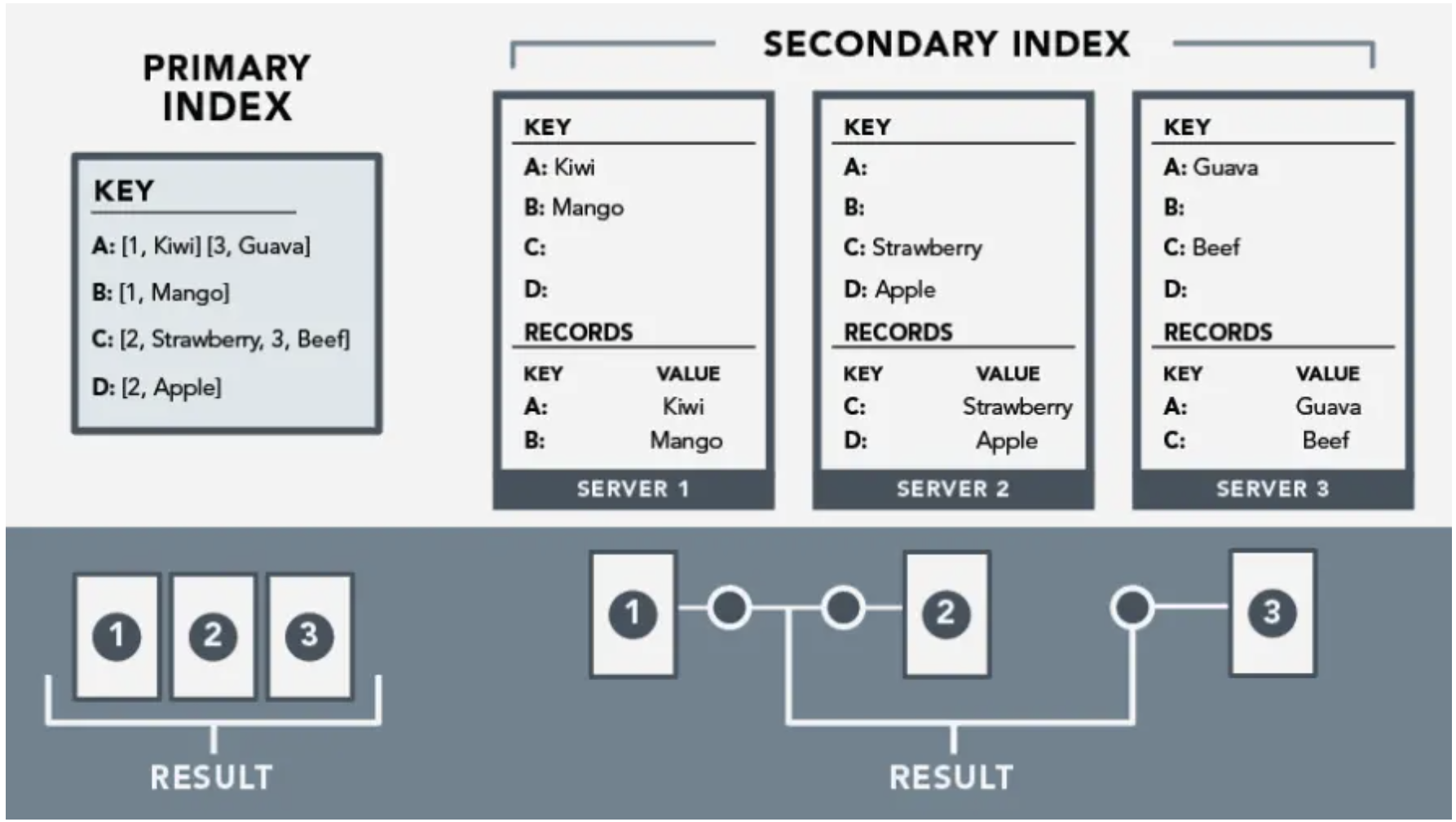 ]
]
- If we have a bunch of
user_id, user_email, stateColumnn, and let's say 1Million rows:- Creating a Secondary Index off of
user_emailbasically means we replicate auser_email -> user_idmapping for every row on every Partition - Creating a Secondary Index off of
statewould mean we replicate astate -> [user_id]mapping for every row on every Partition, but it would be a lot "cheaper" since we'd only be storing a fewuser_id's for each state- Granted, in both setups, we still do need to store 1Million
user_idin each Secondary Index
- Granted, in both setups, we still do need to store 1Million
- Creating a Secondary Index off of
- Query Profile:
- Querying based on
user_idprimary index means 1 machine has to do a Disk Seek to 1 offset location to find the actual data - Querying based on
user_emailsecondary index means every machine has to do a full Disk Seek to find the actual data- There might be some optimizations on ordering
user_emailand getting a Binary Search done, but if it's unordered then finding any randomuser_emailwould require a full seek over the entire index
- There might be some optimizations on ordering
- Querying based on
- The Pitfall here, is that high cardinality data shouldn't be used in Secondary Indexes
Solutions
- Denormalizing data and creating Primary Indexes off of that data can ensure your data is accessible in an efficient manner
- In this way we would:
- Create a new table with the
user_emailas the Primary Key - Insert the
user_idand other attributes into this new table - This would allow us to do a quick lookup on
user_emailand get theuser_id - This is a tradeoff between storage and speed, but in the end it allows us to do a quick lookup
- Create a new table with the
- In this way we would:
- Integrity:
- In the above solution we now have 2 different areas we would need to update any attribute like
user_city- If the update on
user_idsucceeds, and the update onuser_emailfails, we now have inconsistent data 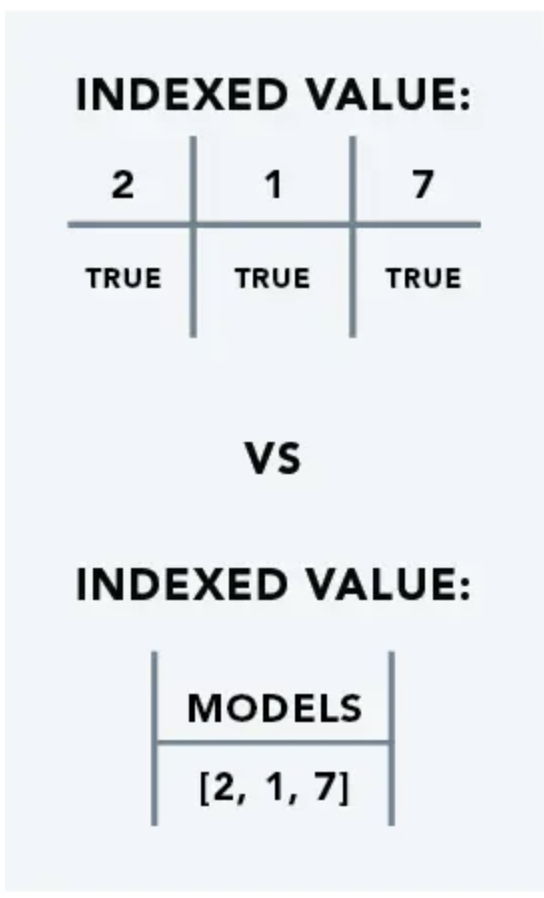
- If the update on
- In doing the Per Reference portion, we essentially add in a new Row to another table with False set for each of
user_idanduser_email- Each of the transactions that would update those 2 Rows with the new
user_cityattribute would also need to update the Reference Row withTrueafter it's completed - Therefore, for each denormalized table, on an attribute update, we must include the Reference creation, and update, in each transaction for an Attribute
- Each of the transactions that would update those 2 Rows with the new
- The Pantheon Reference Website mentions to create and destroy this reference
- "If an update fails midflight, the data must not be lost. This can be achieved by designing for the Cassandra norm, of favoring false positives—that is, a reference is created before the object is created, and a reference is removed after the model has been destroyed."
- In the above solution we now have 2 different areas we would need to update any attribute like

